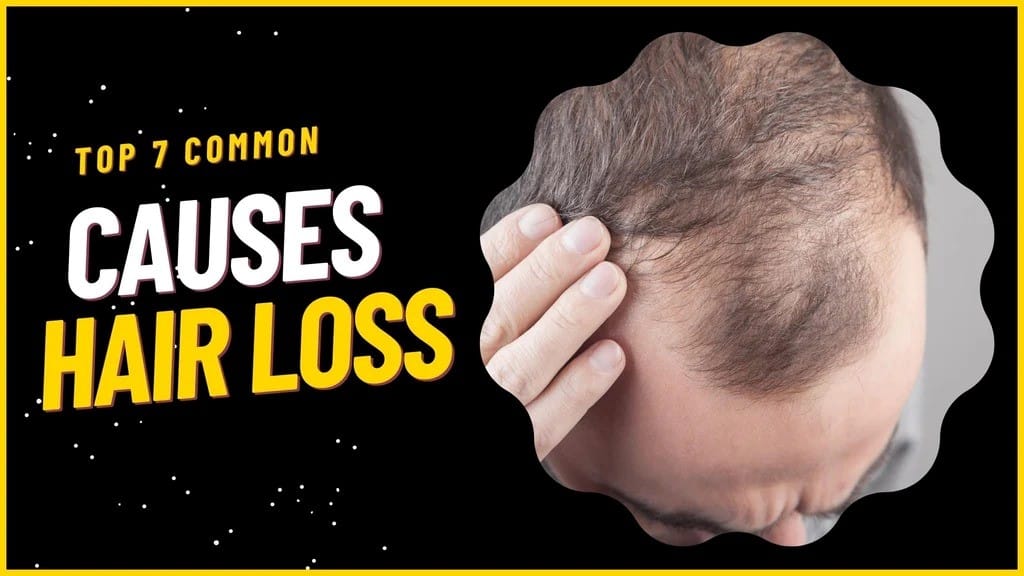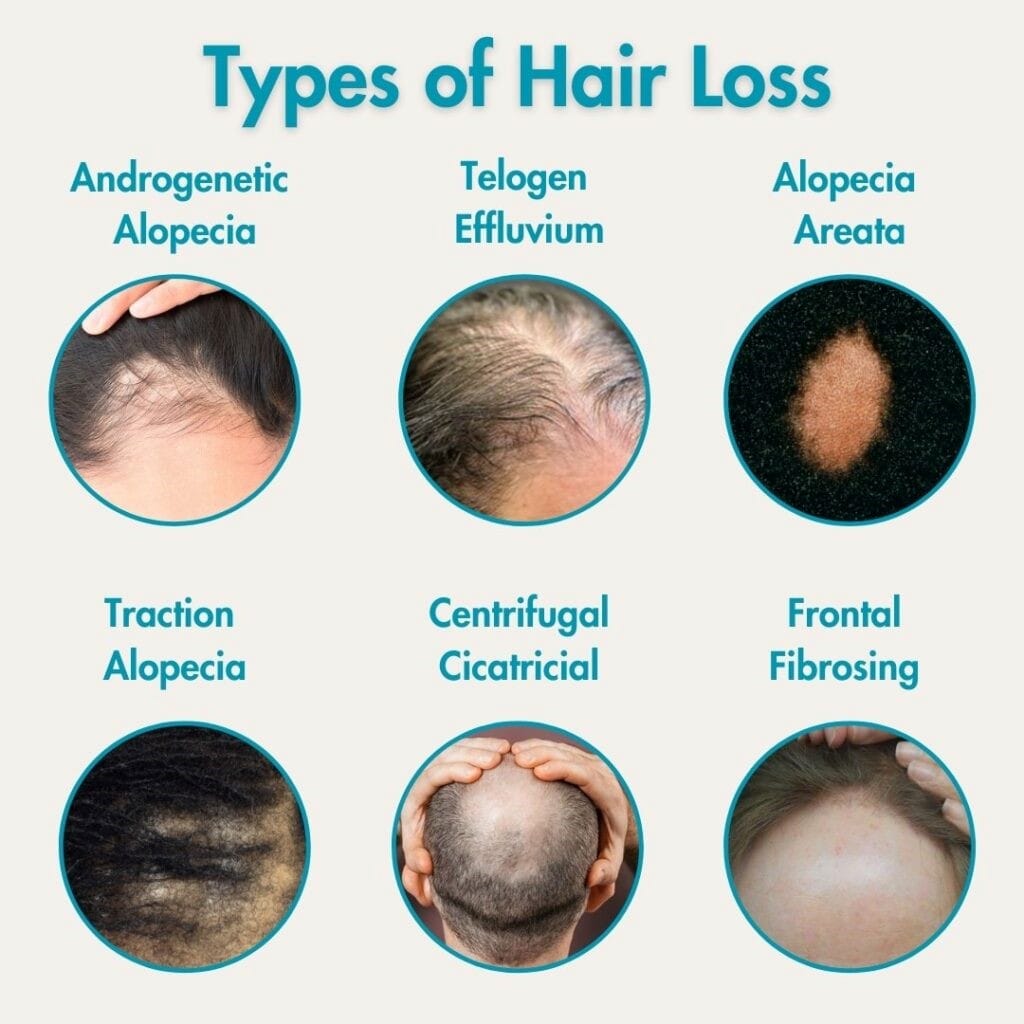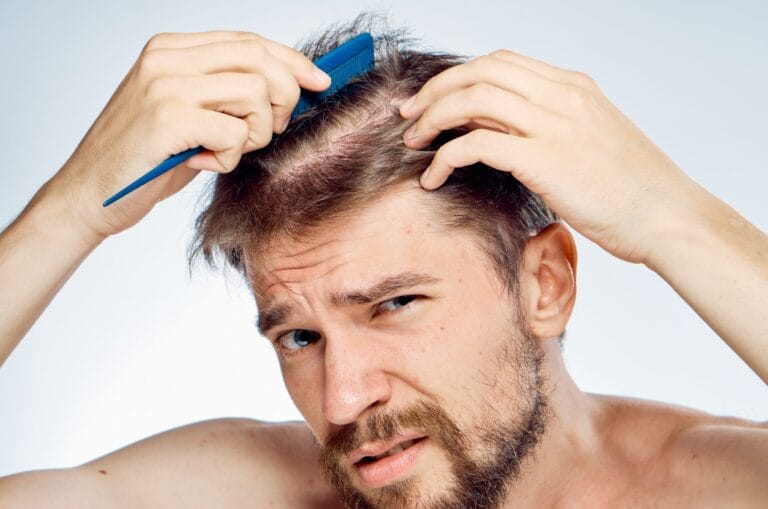Hair loss is a common concern affecting millions of people worldwide. Whether it’s a few extra strands in your comb or noticeable thinning over time, losing hair can be distressing and emotionally challenging. Fortunately, understanding the root causes and exploring effective treatments can help you manage or even reverse hair loss.
In this article, we’ll cover:
- What is hair loss?
- Common causes of hair loss
- Types of hair loss
- Effective treatment options
- Prevention strategies
- When to see a doctor
💇 What Is Hair Loss?

Hair loss, or alopecia, refers to the partial or complete loss of hair from areas where it normally grows. It can affect the scalp, eyebrows, eyelashes, and other parts of the body.
It’s normal to lose 50–100 hairs per day as part of the natural hair growth cycle. However, excessive shedding or visible thinning may signal an underlying issue.
⚠️ Common Causes of Hair Loss

There are many potential triggers for hair loss, including:
1. Genetics(Hereditary Hair Loss)
Known as androgenetic alopecia, this is the most common form of hair loss, affecting both men and women. In men, it’s often called male pattern baldness, and in women, female pattern hair loss.
2. Hormonal Changes
Conditions like pregnancy, menopause, polycystic ovary syndrome (PCOS), and thyroid disorders can disrupt hormone levels and lead to temporary or long-term hair thinning.
3. Nutritional Deficiencies
Lack of protein, iron, vitamin D, biotin, and other essential nutrients may impair hair growth.
4. Stress
Physical or emotional stress (e.g., illness, surgery, trauma) can trigger telogen effluvium, a temporary condition where more hair than usual enters the resting phase.
5. Medical Conditions
- Autoimmune diseases like alopecia areata
- Scalp infections (e.g., ringworm)
- Chronic illnesses such as lupus or diabetes
6. Medications and Treatments
Some drugs used for cancer, depression, arthritis, or high blood pressure can cause hair loss as a side effect.
7. Hair Styling and Products
Frequent use of heat tools, harsh chemicals, tight hairstyles (traction alopecia), or scalp irritation from products can damage hair and cause it to fall out.
🧠 Types of Hair Loss

Understanding the type of hair loss helps determine the best treatment:
Type | Description |
Androgenetic Alopecia | Gradual thinning at the crown and temples (men) or widening part (women). |
Alopecia Areata | Patchy bald spots caused by autoimmune response. |
Telogen Effluvium | Sudden hair shedding due to stress or hormonal shock. |
Traction Alopecia | Caused by tight hairstyles pulling at the hair roots. |
Scarring Alopecia | Inflammatory skin condition that destroys follicles, leading to permanent loss. |
🧴 Hair Loss Treatment Options
1. Topical Treatments
- Minoxidil (Rogaine): FDA-approved for both men and women, helps stimulate follicles and prolong hair growth.
- Available in foam or liquid form for daily use.
2. Oral Medications
- Finasteride (Propecia): A prescription drug for men that reduces DHT levels, slowing hair loss.
- Not suitable for women of childbearing age.
3. Hair Transplant Surgery
- Involves relocating hair follicles from one area to another.
- Effective for permanent hair restoration but can be costly.
4. Platelet-Rich Plasma (PRP) Therapy
- Involves injecting your own plasma into the scalp to promote growth.
- Popular in dermatology clinics for early-stage hair loss.
5. Laser Therapy
- Low-level lasers stimulate hair follicles and improve blood flow.
- Often used at home or in clinics as a non-invasive option.
6. Nutritional Supplements
- Biotin, zinc, iron, omega-3 fatty acids, and saw palmetto may support healthy hair.
- Always consult a doctor before starting supplements.
🛡️ How to Prevent Hair Loss
While not all hair loss can be prevented, especially if it’s genetic, these tips can help minimize damage and support hair health:
✅ Maintain a Balanced Diet
Eat a protein-rich, anti-inflammatory diet with plenty of fruits, vegetables, and whole grains.
✅ Be Gentle with Hair
Avoid excessive brushing, harsh treatments, and tight hairstyles like braids or buns.
✅ Manage Stress
Practice yoga, meditation, exercise, or counseling to reduce emotional stress that can affect your hair.
✅ Use Mild Hair Products
Opt for sulfate-free shampoos and avoid over-washing or excessive heat styling.
✅ Regular Scalp Care
Keep the scalp clean and exfoliated. Massage regularly to boost circulation and hair follicle health.
🧑⚕️ When Should You See a Doctor?
If you experience any of the following, consult a dermatologist or trichologist:
- Sudden or patchy hair loss
- Bald spots or scaling on the scalp
- Hair falling out in clumps
- Thinning that worsens quickly
Hair loss along with other symptoms like fatigue or weight changes
💬 Final Thoughts
Hair loss can feel frustrating and affect your confidence—but you’re not alone, and there are many effective solutions. From lifestyle changes to medical treatments, a wide range of options exist to help slow, stop, or even reverse hair loss.
The key is early diagnosis, consistent care, and a customized treatment plan. If you’re concerned about your hair loss, take the first step by speaking to a healthcare professional today.



